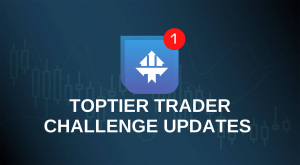Understanding All-or-Nothing Trading Style
Introduction:
In the realm of financial trading, the concept of all-or-nothing trading style represents a high-risk approach that can have significant implications for traders’ capital and the stability of the trading environment. This article delves into the intricacies of all-or-nothing trading style, its impact on traders, and the importance of risk management at TopTier Trader.
What is All-or-Nothing Trading Style?
All-or-nothing trading style involves consecutively opening a substantial number of positions on a single financial instrument, often without regard for market conditions or risk management principles. Traders adopting this approach seek quick profits by risking a significant portion of their capital on each trade, with little consideration for the potential downside.
Trigger Explanation:
The trigger points for All-or-Nothing Trading Style vary depending on the asset class being traded:
- Forex and Major Currency Pairs: A violation occurs if the total open position generates a profit or loss greater than 25% of the initial daily drawdown within a 10-pip movement.
- Cryptocurrencies: A violation occurs if, for every $500 movement in price, the total asset position generates a profit or loss greater than 20% of the initial daily drawdown.
- Indices: A violation occurs if, for every $10 movement in price, the total asset position generates a profit or loss greater than 12.5% of the initial daily drawdown.
- Metals and Commodities: A violation occurs if, for every 10 pip movement in price, the total asset position generates a profit or loss greater than 12.5% of the initial daily drawdown.
Simple Formula for Checking Threshold:
The formula for checking if a position exceeds the threshold is as follows:
Position Size × Price Movement × Pip Value ≤ Threshold Percentage × Initial Daily Drawdown
Explanation of the Formula:
- Position Size: The total number of contracts or lots in the trader’s position.
- Price Movement: The threshold movement in price for the specific asset class being traded.
- Pip Value: The value of one pip for the specific asset.
- Threshold Percentage: The threshold percentage for the specific asset class being traded.
- Daily Drawdown: The initial allowable daily drawdown for the trader’s account.
If the calculated value on the left side of the equation exceeds the threshold determined by the threshold percentage, it indicates a violation of the All-or-Nothing Trading Style.
Implications and Consequences:
The all-or-nothing trading style poses significant risks to traders’ capital and the stability of the trading environment. At TopTier Trader, such practices are strictly prohibited and may result in severe consequences, including strikes, delayed payouts, reduced/rejected payouts, and ultimately, a ban from the platform. Traders adopting an all-or-nothing approach risk not only their own financial well-being but also the integrity and stability of the trading community as a whole.
Example 1: No Violation
Suppose a trader is trading EUR/USD with the following details:
- Asset: EUR/USD
- Total Position size: 3 standard lots
- Pip value for EUR/USD: $10 (for 1 standard lot)
- Price movement: 10 pips (threshold for forex and major currency pairs)
- Initial balance: $200,000
- Initial daily drawdown limit: $10,000
Using the formula:
Position Size × Price Movement × Pip Value ≤ 0.25 × Initial Daily Drawdown
∴ 3 × 10 × $10 ≤ 0.25
∴ $300 ≤ $2,500
Since $300 is less than 25% of the initial daily drawdown limit of $10,000 ($2,500), the total position size does not exceed the threshold. Therefore, it is not a violation of the All-or-Nothing Trading Style.
Example 2: Violation
Suppose a trader is trading Gold (XAU/USD) with the following details:
- Asset: XAU/USD (Gold)
- Total Position size: 35 standard lots
- Pip value for XAU/USD: $10 (for 1 standard lot)
- Price movement: 10 pips (threshold for metals and commodities)
- Initial balance: $200,000
- Initial daily drawdown limit: $10,000
Using the formula:
Position Size × Price Movement × Pip Value ≤ 0.125 × Initial Daily Drawdown
∴ 35 × 10 × $10 ≤ 0.125 × $10,000
∴ $3,500 ≤ $1,250
Since $3,500 is greater than 12.5% of the initial daily drawdown limit of $10,000 ($1,250), the total position size exceeds the threshold. Therefore, it is a violation of the All-or-Nothing Trading Style.
Example 3: No Violation
Suppose a trader is trading US30 (Dow Jones Industrial Average) with the following details:
- Asset: US30 (Dow Jones Industrial Average)
- Total Position size: 20 standard lots
- Pip value for US30: $1 (for 1 standard lot)
- Price movement: $10 (threshold for indices)
- Initial balance: $200,000
- Initial daily drawdown limit: $10,000
Using the formula:
Position Size × Price Movement × Pip Value ≤ 0.125 × Initial Daily Drawdown
∴ 20 × 10 × $1 ≤ 0.125 × $10,000
∴ $200 ≤ $1,250
Since $200 is less than 12.5% of the initial daily drawdown limit of $10,000 ($1,250), the total position size does not exceed the threshold. Therefore, it is not a violation of the All-or-Nothing Trading Style.
Example 4: Violation
Suppose a trader is trading Bitcoin (BTC/USD) with the following details:
- Asset: BTC/USD (Bitcoin)
- Position size: 15 standard lots
- Pip value for BTC/USD: $1 (for 1 standard lot)
- Price movement: $500 (threshold for cryptocurrencies)
- Initial balance: $200,000
- Initial daily drawdown limit: $10,000
Using the formula:
Position Size × Price Movement × Pip Value ≤ 0.2 × Initial Daily Drawdown
∴ 15 × 500 × $1 ≤ 0.2 × $10,000
∴ $7,500 ≤ $2,000
Since $7,500 is greater than 20% of the initial daily drawdown limit of $10,000 ($2,000), the total position size exceeds the threshold. Therefore, it is a violation of the All-or-Nothing Trading Style.
Updated: 1st of April 2024
With Effect From: 6th of April 2024



